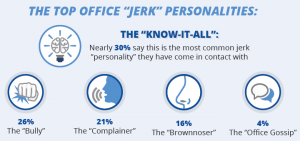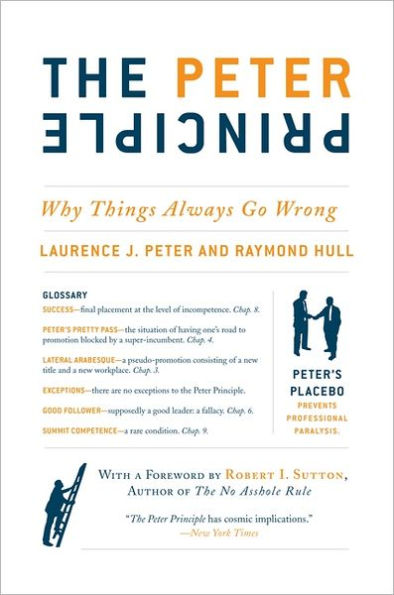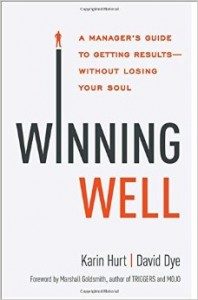|
|
|
Monday, July 29th, 2019
 (see the full Infographic at Business Insider) Poking through 13+ years of posts I find information that’s as useful now as when it was written.
Golden Oldies is a collection of the most relevant and timeless posts during that time.
People. Whether at work or in your personal life, how you choose to respond to people is usually the make or break of any situation. That is especially true when dealing with someone’s negative actions.
Read other Golden Oldies here.
I’m in love — with a man I never met, never spoke to, never followed or chatted with online.
His name is Rich Waidmann and he’s founder and CEO of Connectria Hosting.
I love him because when he started his company he consciously set out to make it a great place to work.
That means it’s a job requirement at his company that every employee treat everyone else with courtesy and respect as well as “going the extra mile” to take care of people in the community who are less fortunate
Then his company did a survey and found that
More than half (55%) of 250 IT professionals in the US. surveyed said they had been bullied by a co-worker. And 65% have said they dreaded going to work because of bad behavior of a co-worker.
Waidmann believes it shouldn’t be that way so he’s starting a No Jerks Allowed movement in an effort to encourage better cultures.
Way back in 2007 Stanford’s Bob Sutton wrote The No Asshole Rule: Building a Civilized Workplace and Surviving One That Isn’t, but looking at the stats I’m not sure how much good it actually did.
And considering the fact that companies are shoehorning more people into less space something needs to change.
The Talmud says, “We do not see the world as it is. We see the world as we are.” Moreover, it’s often as we are that particular day, or even minute, and even as we change, minute to minute, so do others.
Jerks are known to lower productivity and kill innovation, so a lot of good information on identifying and dealing with jerks has been developed since Sutton’s book came out.
Contributing to that effort, here are my four favorite MAP attitudes for dealing with jerks.
-
- Life happens, people react and act out, but that doesn’t mean you have to let their act in.
- Consider the source of the comment before considering the comment, then let its effect on you be in direct proportion to your respect for that source.
- Use mental imagery to defuse someone’s effect on you. This is especially useful against bullying and intimidation. Do it by having your mental image of the person be one that strips power symbols and adds amusement. (Give me a call if you want my favorite, it’s a bit rude, but has worked well for many people.)
And, finally, the one I try to keep uppermost in my mind at all times
-
- At least some of “them” some of the time consider me a jerk—and some of the time they are probably correct.
Image credit: Connectria
Posted in Communication, Culture, Ducks In A Row, Personal Growth, Retention | No Comments »
Monday, March 4th, 2019

Poking through 11+ years of posts I find information that’s as useful now as when it was written.
Golden Oldies is a collection of the most relevant and timeless posts during that time.
Jerks, by whatever name, have been on the rise for awhile, but that seems to have escalated in the last couple of years, especially in the workplace. Not that jerk bosses are anything new, but they are getting more blatant.
Read other Golden Oldies here.
Although both articles I refer to are aimed at startup founders, I believe they are applicable to bosses at any level and in any company.
First, no boss ever accomplished their goals by being a jerk.
As Bob Sutton explains in The Asshole Survival Guide, treating people like dirt hurts their focus and saps their motivation. (…)
In the podcast, Reid [Hoffman] describes his test of a great culture: Does every employee feel that they personally own the culture?
Most jerks, no matter how unlikely that the comparison is valid, point to Steve Jobs to justify their actions, but consider how much more he could have done if he had been a better leader/manager..
It’s hard to find any boss who doesn’t recognize that culture is the most critical element in a company’s success.
However, what “culture” is has been twisted and warped out of all recognition.
These days “cultural fit” is the excuse of choice to indulge whatever biases, prejudices, and bigotry moves the hiring boss.
So, what does cultural fit really mean?
To answer that you have to understand what culture really is.
Culture is a reflection of the values of the boss.
Values have nothing to do with perks, food, or office buildings and everything to do with attitudes such as fairness, merit, transparency, trust, etc.
The point of cultural fit is to hire people whose personal values are, at the least, synergistic with the cultural values of the company.
Period.
That means that if the boss is biased, bigoted or a jerk, they will hire people who have similar values.
Image credit: Matthias Forster
Posted in Culture, Ducks In A Row, Golden Oldies | No Comments »
Tuesday, February 19th, 2019

Receiver Larry Fitzgerald, entering his 15th season, said this is the advice he’d like to give rookies.
God gave you two ears and one mouth for a reason. Listen twice as much as you talk. You learn a lot more when you’re listening.
Wally Bock quoted the same thing in a recent post.
Describing a manager who made a major hiring error that went uncorrected, I commented , that he couldn’t hear and wouldn’t have listened anyway.
Of course, it’s easier to talk than listen.
And you can’t really listen if you are looking at your phone.
Or doing anything on your computer.
Or thinking about where to go to lunch or what to make for dinner.
Or thinking about what you want to say as soon as the other person shuts up.
In other words, you can’t listen, really listen if you’re multitasking.
I might end this post with Wally’s high-level, positive summing up.
Listening is a critical leadership skill you can master. It will help you learn about the people you work with, demonstrate you think they’re important, and help you make better decisions.
But my take is low-level simple.
Knowing and practicing good listening is a great way to avoid being the lead character in Bob Sutten’s book The No Asshole Rule.
Image credit: Alan Goudy
Posted in Communication, Culture, Ducks In A Row, Personal Growth | No Comments »
Tuesday, September 18th, 2018

Yesterday I mentioned the Peter Principle, by Laurence J. Peter, a prominent Canadian education scholar. It prompted a call from a young (23) friend asking how accurate it is now, considering it was written nearly 50 years ago .
It wasn’t that “Ben” disagreed with the premise, especially considering his boss, he just thought that there should be more current information.
And there is. So for Ben and others who wonder, here are links to more current information and research in chronological order.
First is Bob Sutton’s marvelous foreword written for the Principle’s 40th anniversary edition in 2009.
My father loved The Peter Principle because it explained why life could be so maddening—and why everyone around you seems, or is doomed to become, incompetent.
Second, in August, 2014, from Rob Asghar, a good, somewhat depressing, overview of the book, along with a few words of hope.
We’re human, in the end. The Tony Robbins types try to sell us the life-hacks, the superfood diets, the meditation techniques and the mantras to transfigure us from mortal to immortal. That only sets us up to fail in a different and delusional way.
Next, in December, an article in HBR looked at the Principle from the other side — and it only took ten years to happen.
This seems surprising since of course every manager is a subordinate as well. And indeed in The Subordinate’s Predicaments, Case Western Reserve management professor Eric Neilsen and then-doctoral candidate Jan Gypen make that point explicitly.
In April this year, Rodd Wagner described research that proved the Principal was indeed real and ways to circumvent it. Although the research focuses on sales, it is applicable to any career field.
Three professors – Alan Benson of the University of Minnesota, Danielle Li of MIT and Kelly Shue of Yale – analyzed the performance of 53,035 sales employees at 214 American companies from 2005 to 2011. During that time, 1,531 of those sales reps were promoted to become sales managers.
I hope this info (and I’m sure there is plenty more for the searching) is useful to Ben and all those like him, who are either struggling with a very real Peter Principle boss or working hard to avoid becoming one.
Image credit: Barnes and Noble
Posted in Hiring, Motivation, Personal Growth | 1 Comment »
Tuesday, October 10th, 2017

Robert Sutton, Stanford management prof and the author of “The No Asshole Rule” and “The Asshole Survival Guide,” is a very smart guy.
His knowledge and understanding of the forces affecting the modern workplace, and what to do about them, are encompassing and engaging.
Here are three things Sutton believes are increasing rudeness and making things worse.
- We make less eye contact nowadays — and therefore have less empathy
- Income inequality is on the rise, leading to jealousy and scorn
- We work in open offices, which exacerbate existing problems
Exacerbating the loss of empathy are tools, such as Slack, that further reduce eye contact, even when working right beside someone. In fact, as mentioned yesterday, physical proximity doesn’t matter when communications are screen based.
While bullying bosses are falling out of fashion, technology may encourage people to adopt harsher, less empathetic communication styles, said Liz Dolan, a former exec at Nike, OWN, and the National Geographic Channels. (…) “It makes it really hard for people to understand what boundaries are when they don’t really get to know each other because all their communication is online,” Dolan said. “We all know that it’s true that there are things you would say in an email or a text message to someone that you would never in a million years say to their face.”
What’s worse, researchers at the University of Florida have found rudeness to be contagious. So just one heated email can have a truly toxic ripple effect throughout your team.
These factors play a mojor role in engagement — or the lack of it.
According to Gallup Daily tracking, 32% of employees in the U.S. are engaged — meaning they are involved in, enthusiastic about and committed to their work and workplace.
The overall effect is summed up in one word: loneliness, according to former Surgeon General Vivek Murthy.
… being physically close your colleagues doesn’t guarantee you’ll feed off their brainpower or work ethic. There must still be some aspect of social connection — be it joking around or thoughtful conversation — for health and productivity to improve.
“A more connected workforce is more likely to enjoy greater fulfillment, productivity, and engagement while being more protected against illness, disability, and burnout,”
In short, screen time -> less empathy -> more rudeness -> escalating disengagement -> increased loneliness = lower productivity and engagement.
This sequence of events has a very personal effect on you, too, in terms of poorer reviews, smaller raises, and fewer promotional opportunities.
Image credit: Joshua Smith
Posted in Communication, Culture, Ducks In A Row, Personal Growth | No Comments »
Tuesday, July 11th, 2017
 Although both articles I refer to are aimed at startup founders, I believe they are applicable to bosses at any level and in any company. Although both articles I refer to are aimed at startup founders, I believe they are applicable to bosses at any level and in any company.
First, no boss ever accomplished their goals by being a jerk.
As Bob Sutton explains in The Asshole Survival Guide, treating people like dirt hurts their focus and saps their motivation. (…) In the podcast, Reid [Hoffman] describes his test of a great culture: Does every employee feel that they personally own the culture?
Most jerks point to Steve Jobs to justify their actions, but consider how much more he could have done if he had been a better leader/manager.
It’s hard to find any boss who doesn’t recognize that culture is the most critical element in a company’s success.
However, what “culture” is has been twisted and warped out of all recognition.
These days “cultural fit” is the excuse of choice to indulge whatever biases, prejudices, and bigotry moves the hiring boss.
So, what does cultural fit really mean?
To answer that you have to understand what culture really is.
Culture is a reflection of the values of the boss.
Values have nothing to do with perks, food, or office buildings and everything to do with attitudes such as fairness, merit, transparency, trust, etc.
The point of cultural fit is to hire people whose personal values are, at the least, synergistic with the cultural values of the company.
Period.
That means that if the boss is biased, bigoted or a jerk, they will hire people who have similar values.
Image credit: Matthias Forster
Posted in Culture, Ducks In A Row | No Comments »
Tuesday, March 28th, 2017
This is a short post, with a lot of valuable links.

Way back in 2007 Standard prof Bob Sutton wrote the No Asshole Rule and McKinsey did in-depth research on the damage they do.
In 2015 Rich Waidmann created a no jerks culture.
Sutton followed up in 2015 essentially saying it’s all about the people.
Last week a post on LinkedIn talking about women CTOs who won’t hire “brilliant jerks.”
There are hundreds more posts, articles, books, research, comments, etc. that talk about the downside of jerks — brilliant or otherwise. (In case you’re wondering, the brilliance supposedly offsets the jerk part.)
But it’s a fallacy to think that it’s just women who are creating cultures that don’t tolerate brilliant jerks, just as it is to think that all brilliant jerks are male.
As with any other label, brilliant jerks can be found in any imaginable combination of race, creed, color, national origin, gender identification, size, and shape.
None are worth keeping, because, even if it takes some time, they will poison your culture and run off your team.
Image credit: Kurt Bauschardt
Posted in Culture, Ducks In A Row | No Comments »
Monday, March 27th, 2017
It’s amazing to me, but looking back over more than a decade of writing I find posts that still impress, with information that is as useful now as when it was written.
Golden Oldies are a collection of what I consider some of the best posts during that time.
Since tomorrow’s post takes yet another look at Silicon Valley culture, sources of the blatant misogyny, and how that relates to brilliant jerks and so-called stars, I thought I’d share Rich Waidmann’s take on the subject.
Read other Golden Oldies here.
 I’m in love — with a man I never met, never spoke to, never followed or chatted with online. I’m in love — with a man I never met, never spoke to, never followed or chatted with online.
His name is Rich Waidmann and he’s founder and CEO of Connectria Hosting.
I love him because when he started his company he consciously set out to make it a great place to work. (See the full Infographic at Business Insider)
That means it’s a job requirement at his company that every employee treat everyone else with courtesy and respect as well as “going the extra mile” to take care of people in the community who are less fortunate
Then his company did a survey and found that
More than half (55%) of 250 IT professionals in the US. surveyed said they had been bullied by a co-worker. And 65% have said they dreaded going to work because of bad behavior of a co-worker.
Waidmann believes it shouldn’t be that way so he’s starting a No Jerks Allowed movement in an effort to encourage better cultures.
Way back in 2007 Stanford’s Bob Sutton wrote The No Asshole Rule: Building a Civilized Workplace and Surviving One That Isn’t, but looking at the stats I’m not sure how much good it actually did.
And considering the fact that companies are shoehorning more people into less space something needs to change.
The Talmud says, “We do not see the world as it is. We see the world as we are.” Moreover, it’s often as we are that particular day, or even minute, and even as we change, minute to minute, so do others.
Jerks are known to lower productivity and kill innovation, so a lot of good information on identifying and dealing with jerks has been developed since Sutton’s book came out.
Contributing to that effort, here are my four favorite MAP attitudes for dealing with jerks.
- Life happens, people react and act out, but that doesn’t mean you have to let their act in.
- Consider the source of the comment before considering the comment, then let its effect on you be in direct proportion to your respect for that source.
- Use mental imagery to defuse someone’s effect on you. This is especially useful against bullying and intimidation. Do it by having your mental image of the person be one that strips power symbols and adds amusement. (Give me a call if you want my favorite, it’s a bit rude, but has worked well for many people.)
And, finally, the one I try to keep uppermost in my mind at all times
- At least some of “them” some of the time consider me a jerk—and some of the time they are probably correct.
Image credit: Connectria
Posted in Culture, Golden Oldies | No Comments »
Tuesday, April 19th, 2016
 A couple of years ago, in a post citing Robert Sutton’s comments on scaling, I said, A couple of years ago, in a post citing Robert Sutton’s comments on scaling, I said,
A company isn’t an entity at all. It’s a group of people all moving in the same direction, united in a shared vision and their efforts to reach a common goal. (…)Yes, it’s the people. It has always been the people all the way back to our hunter ancestors.
And it will always be the people.
Years before that I wrote about creating a Good Culture in a Toxic Environment.
My e-buddy Wally Bock says bosses need to have a duel focus to be truly successful.
One is to accomplish the mission, make your numbers in business. The other is to care for your people, keep them safe and help them grow.
To that end, I thought I’d share Wally’s review of a book offering guidance on carrying them out.
 Book Review: Winning Well Book Review: Winning Well
Several years ago at a party, I was approached by a young man who had just assumed his first management job. His name was Carl and he had a simple question: “Is there any company I can go to where I don’t have to choose between getting good results and treating people right?”
I answered Carl’s question with one of my own: “Why not stay where you are and do the job right?” I told him what I learned in the Marines, that you really have two jobs. One is to accomplish the mission, make your numbers in business. The other is to care for your people, keep them safe and help them grow.
It can be done. There are managers all over the world doing it every day. Carl and I talked some more. I tried to give him the basics of doing it right. If we were having that conversation today, I’d suggest that Carl read Winning Well.
An Overview of Winning Well
The promise of the book is in the full title: Winning Well: A Manager’s Guide to Getting Results–Without Losing Your Soul. Karin Hurt and David Dye have written a book that goes way beyond my discussion with Carl. Here’s the premise of the book, taken from chapter one.
“Winning Well means that you sustain excellent performance over time, because you refuse to succumb to harsh, stress-inducing shortcuts that temporarily scare people into ‘performing.’ You need energized, motivated people all working together. Your strategy is only as strong as the ability of your people to execute at the front line, and if they’re too scared or tired to think, they won’t. You can have all the great plans, six sigma quality programs, and brilliant competitive positioning in the universe, but if the human beings doing the real work lack the competence, confidence, and creativity to pull it off, you’re finished.”
The book is divided into four sections. The first covers the basics of Winning Well. Section two is about accomplishing the mission, getting the job done. Section three is about caring for the people, covering how you “Motivate, Energize, and Inspire Your Team.” The fourth and final section is practical advice for getting started, even if your boss doesn’t care about your soul or your team doesn’t care about the work or each other.
Who Should Not Read Winning Well
There are people who believe that all of this caring for the people stuff is nonsense. If that’s you, don’t even bother to pick up Winning Well. Wait until you think there might be something to the caring part of being a manager, then, when you’re looking for the “how to do it” part, buy the book and read it.
Who Should Read Winning Well
You should read Winning Well if you want practical advice for the real problems of getting results without losing your soul. Here are three kinds of people who can benefit from this book.
If you’re a working manager
If you’re a working manager and you want to learn the how’s of Winning Well, you can use this book in two ways. Read it straight through, making notes as you go. Then create an action plan for becoming the manager you want to be. There’s plenty of help in the book and online.
You can also read individual chapters to help you with a thorny issue at work. Dip into the book, get some just-in-time learning, and meet the specific challenge you’re facing today.
If you are a leader of managers
You’ll get a lot from this book and it’s also a great book to share with your managers. Winning Well is about rich, long term success. This would be a great book to stimulate discussion at team meetings or for a book club.
If you think you might want to be a manager
If you’re considering becoming a manager, Winning Well can help you in two ways. You’ll learn how you can be the kind of boss who gets results and builds relationships. As a bonus, the many stories and examples will give you insight into what a manager’s job is all about.
Bottom Line
If you’re a manager who wants to get great results and still have a good relationship with your people, or if you want to become that kind of manager, Winning Well will give you the insight, information, and inspiration to achieve those goals.
You can find out more about this book and how it got written by reading The Story of Winning Well on my writing site.
Post and image credit: Wally Bock; Duck image credit: gorfor
Posted in Culture, Ducks In A Row | No Comments »
Tuesday, February 24th, 2015
I’m in love — with a man I never met, never spoke to, never followed or chatted with online.
His name is Rich Waidmann and he’s founder and CEO of Connectria Hosting.
I love him because when he started his company he consciously set out to make it a great place to work.
That means it’s a job requirement at his company that every employee treat everyone else with courtesy and respect as well as “going the extra mile” to take care of people in the community who are less fortunate
Then his company did a survey and found that
More than half (55%) of 250 IT professionals in the US. surveyed said they had been bullied by a co-worker. And 65% have said they dreaded going to work because of bad behavior of a co-worker.
Waidmann believes it shouldn’t be that way so he’s starting a No Jerks Allowed movement in an effort to encourage better cultures.
Way back in 2007 Stanford’s Bob Sutton wrote The No Asshole Rule: Building a Civilized Workplace and Surviving One That Isn’t, but looking at the stats I’m not sure how much good it actually did.
And considering the fact that companies are shoehorning more people into less space something needs to change.
The Talmud says, “We do not see the world as it is. We see the world as we are.” Moreover, it’s often as we are that particular day, or even minute, and even as we change, minute to minute, so do others.
Jerks are known to lower productivity and kill innovation, so a lot of good information on identifying and dealing with jerks has been developed since Sutton’s book came out.
Contributing to that effort, here are my four favorite MAP attitudes for dealing with jerks.
- Life happens, people react and act out, but that doesn’t mean you have to let their act in.
- Consider the source of the comment before considering the comment, then let its effect on you be in direct proportion to your respect for that source.
- Use mental imagery to defuse someone’s effect on you. This is especially useful against bullying and intimidation. Do it by having your mental image of the person be one that strips power symbols and adds amusement. (Give me a call if you want my favorite, it’s a bit rude, but has worked well for many people.)
And, finally, the one I try to keep uppermost in my mind at all times
- At least some of “them” some of the time consider me a jerk—and some of the time they are probably correct.
Image credit: Connectria
Posted in Culture, Ducks In A Row, Personal Growth | No Comments »
|
 Subscribe to
Subscribe to
MAPping Company Success
About Miki 
Clarify your exec summary, website, etc.
Have a quick question or just want to chat? Feel free to write or call me at 360.335.8054
The 12 Ingredients of a Fillable Req
CheatSheet for InterviewERS
CheatSheet for InterviewEEs™
Give your mind a rest. Here are 4 quick ways to get rid of kinks, break a logjam or juice your creativity!
Creative mousing
Bubblewrap!
Animal innovation
Brain teaser
The latest disaster is here at home; donate to the East Coast recovery efforts now!
Text REDCROSS to 90999 to make a $10 donation or call 00.733.2767. $10 really really does make a difference and you'll never miss it.
And always donate what you can whenever you can
The following accept cash and in-kind donations: Doctors Without Borders, UNICEF, Red Cross, World Food Program, Save the Children
*/
?>About Miki
About KG
Clarify your exec summary, website, marketing collateral, etc.
Have a question or just want to chat @ no cost? Feel free to write
Download useful assistance now.
Entrepreneurs face difficulties that are hard for most people to imagine, let alone understand. You can find anonymous help and connections that do understand at 7 cups of tea.
Crises never end.
$10 really does make a difference and you’ll never miss it,
while $10 a month has exponential power.
Always donate what you can whenever you can.
The following accept cash and in-kind donations:
|









 Although both articles I refer to are aimed at startup founders, I believe they are applicable to bosses at any level and in any company.
Although both articles I refer to are aimed at startup founders, I believe they are applicable to bosses at any level and in any company.
 A couple of years ago, in a post citing Robert Sutton’s comments on scaling,
A couple of years ago, in a post citing Robert Sutton’s comments on scaling,  Book Review: Winning Well
Book Review: Winning Well
